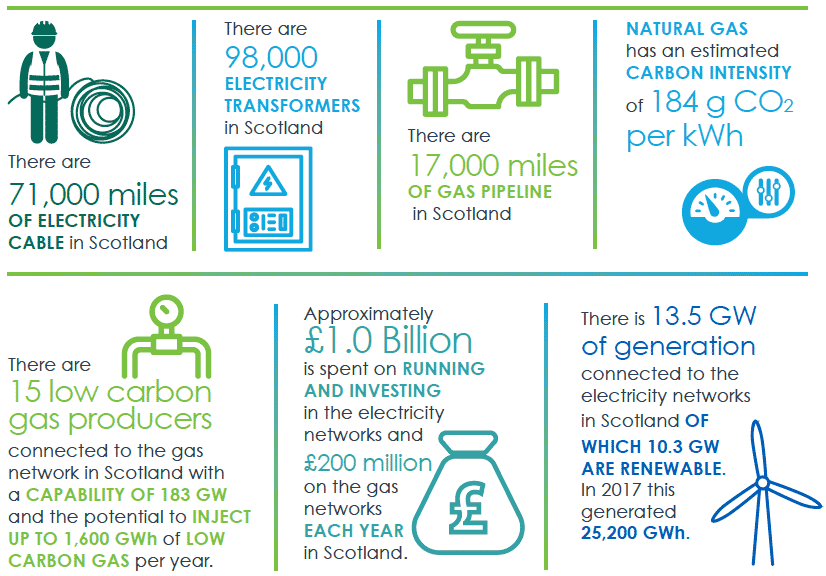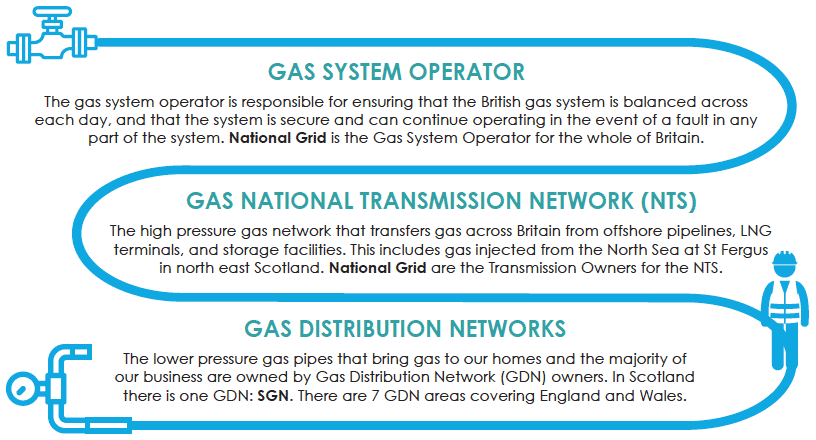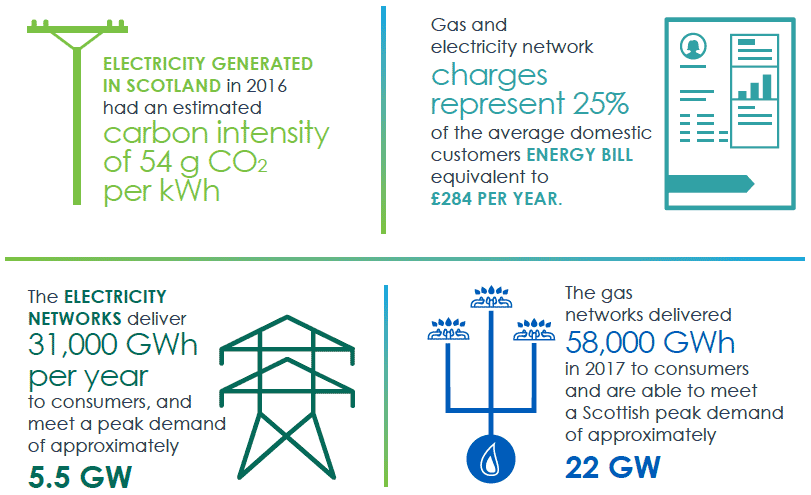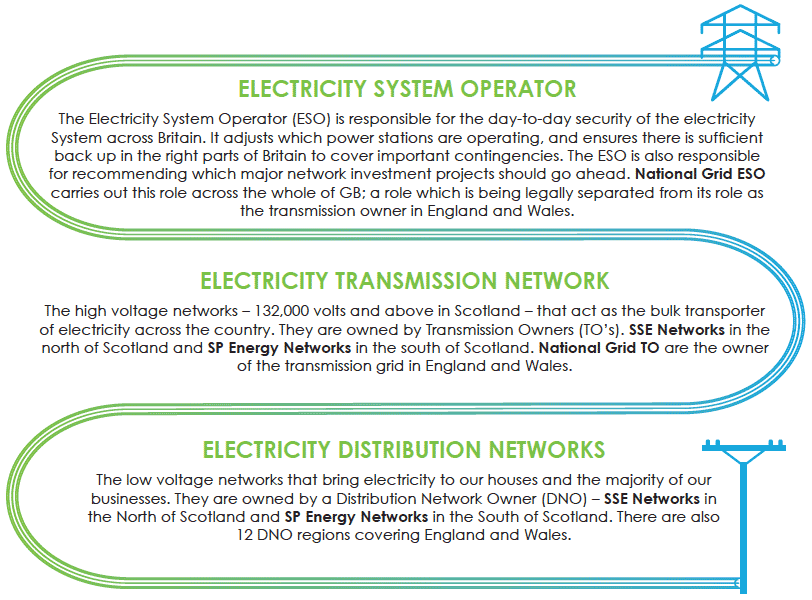Scotland's electricity and gas networks: vision to 2030
Based on Scotland's energy strategy, this document looks at the ways in which Scotland's electricity and gas network infrastructure will continue to support the energy transition.
The Electricity and Gas networks today
Infographic:

Infographic text:
There are 71,000 miles of electricity cable in Scotland
There are 98,000 electricity transformers in Scotland
There are 17,000 miles of gas pipeline in Scotland
Natural gas has an estimated carbon intensity of 184 g CO2 per kWh
There are 15 low carbon gas producers connected to the gas network in Scotland with a capability of 183 GW and the potential to inject up to 1,600 GWh of low carbon gas per year.
Approximately £1.0 Billion is spent on running and investing in the electricity networks and £200 million on the gas networks each year in Scotland.
There is 13.5 GW of generation connected to the electricity networks in Scotland of which 10.3 GW are renewable. In 2017 this generated 25,200 GWh.
Infographic:

Infographic text:
Gas System Operator
The gas system operator is responsible for ensuring that the British gas system is balanced across each day, and that the system is secure and can continue operating in the event of a fault in any part of the system. National Grid is the Gas System Operator for the whole of Britain.
Gas National Transmission Network (NTS)
The high pressure gas network that transfers gas across Britain from offshore pipelines, LNG terminals, and storage facilities. This includes gas injected from the North Sea at St Fergus in north east Scotland. National Grid are the Transmission Owners for the NTS.
Gas Distribution Networks
The lower pressure gas pipes that bring gas to our homes and the majority of our business are owned by Gas Distribution Network (GDN) owners. In Scotland there is one GDN: SGN. There are 7 GDN areas covering England and Wales.
Infographic:

Infographic text:
Electricity Generated in Scotland in 2016 had an estimated carbon intensity of 54 g CO2 per kWh
Gas and electricity network charges represent 25% of the average domestic customers energy bill equivalent to £284 per year.
The electricity networks deliver 31,000 GWh per year to consumers, and meet a peak demand of approximately 5.5 GW
The gas networks delivered 58,000 GWh in 2017 to consumers and are able to meet a Scottish peak demand of approximately 22 GW
Infographic:

Infographic text:
Electricity System Operator
The Electricity System Operator (ESO) is responsible for the day-to-day security of the electricity System across Britain. It adjusts which power stations are operating, and ensures there is sufficient back up in the right parts of Britain to cover important contingencies. The ESO is also responsible for recommending which major network investment projects should go ahead. National Grid ESO carries out this role across the whole of GB; a role which is being legally separated from its role as the transmission owner in England and Wales.
Electricity Transmission Network
The high voltage networks - 132,000 volts and above in Scotland - that act as the bulk transporter of electricity across the country. They are owned by Transmission Owners (TO's). SSE Networks in the north of Scotland and SP Energy Networks in the south of Scotland. National Grid TO are the owner of the transmission grid in England and Wales.
Electricity Distribution Networks
The low voltage networks that bring electricity to our houses and the majority of our businesses. They are owned by a Distribution Network Owner (DNO) - SSE Networks in the North of Scotland and SP Energy Networks in the South of Scotland. There are also 12 DNO regions covering England and Wales.
Contact
Email: neal.rafferty@gov.scot
There is a problem
Thanks for your feedback